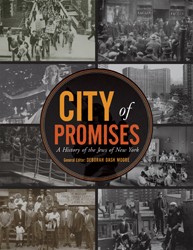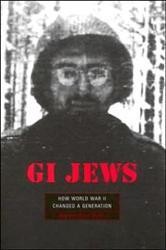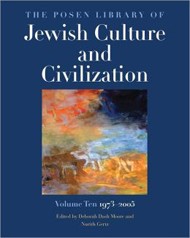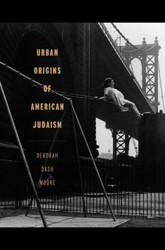Jewish books, Jewish libraries — it’s easy enough to attach the word Jewish to anything literary. But what about Jewish anthologies? If Jews, as the saying goes, are the people of the book, then Jewish anthologies must be considered. This eminently Jewish tradition, which arguably began with the Bible, may indeed be the quintessential Jewish practice: creating new Jewish literature out of old Jewish literature.
As a historian, and, now, as an anthologist myself, I’ve thought a lot about creating Jewish anthologies. It’s an enormous responsibility, an enticing but daunting challenge. As the scholar David Roskies has written, “the anthologizer gets to decide who’s in and who’s out, where to begin and where to end.” These choices, like everything Jewish, are complicated: “Before you know it, you have a story, a narrative, and every such narrative is fraught with meaning: aesthetic, ideological, political.”
Personally, I’ve found Roskies’ words both useful and relevant. After I was named co-editor, with Nurith Gertz, of a volume of The Posen Library of Jewish Culture and Civilization, earlier this year I became editor-in-chief of the entire 10-volume series, covering all of Jewish history, from Biblical times to the present. I was delighted to take on this immense project in addition to my day job as a historian and professor. It has given me an opportunity to think deeply about Jewish anthologies: what they are, what they’ve been, and what they might become.
I’ll begin, as a historian must, with the past. Anthologies are a simultaneously ancient, medieval, and modern Jewish tradition. During the Jewish Middle Ages, anthologies became primary mediums for recording stories, poems, and interpretations of classical texts. They also served as a means of transmitting and preserving textual traditions across generations. When Jews sat down to their Passover Seder, they read from an anthology: the Haggadah. This Jewish text continually gets reinvented — illustrated, translated, modified — to reach new generations.
In the modern period, Jews transformed the anthology. It became into an instrument for cultural retrieval. Both Zionists and Yiddishists used anthologies to advance their intellectual and political goals. No less importantly, the anthology helped establish new fields of Jewish research. It played key roles in the study of Hebrew poetry, folklore, music, and popular culture.
Today, scholars recognize the significance of Jewish anthologies. Midrash scholar David Stern, for instance, sees anthologies everywhere in Jewish literature. Stern, who edited The Anthology in Jewish Literature, cites the Bible itself, not to mention nearly all the canonical texts of Judaism: the Mishnah, the Talmud, classical midrash, and the prayerbook. Some biblical books are anthologies — e.g. Psalms and Proverbs. Others reflect what Stern calls an “anthological habit” — a tendency to collect “discrete and sometimes conflicting stories or traditions.” Think, for example, of the two accounts of the creation of human beings presented side by side in Genesis, without comment or any effort to unify them.
As this brisk survey shows, Jewish anthologies are diverse and therefore difficult to define. Or are they? In his essay, Roskies gives a simple, sublime definition: they are a Jewish conversation extending both backward and forward in time. Backward, because the anthologists have read and judged Jewish texts from earlier eras, selecting some, rejecting others. Forward, because the anthologist seeks to create new understandings that will shape the Jewish future, contributing to an ongoing dialogue. This is the “Jewish anthological imagination,” as Roskies so elegantly puts it.
So, then, how should a modern anthologist go about their task? For starters, they should pay close attention to translations. Translating has long, distinguished Jewish history. As a means of conveying texts, sacred and secular alike, into the languages Jews speak, translation has been invaluable. It has kept Jewish traditions alive as Jews have migrated and acquired new languages. Translation is complicated, however; and converting Jewish sources into the current world’s universal language, English, is especially so. As literary scholar Anita Norich points out, yiddishkeyt doesn’t exactly mean Jewishness, and Shoah is not quite a synonym for Holocaust. To translate, as the old saying goes, is to betray, to be a traitor. And yet it is necessary.
Translation aside, there’s the question of organization: where do you place hundreds, even thousands, of documents, artifacts, and works of art? In what order? In what categories? With The Posen Library, there was no single answer to these questions. Although the Bible might be a model, none of the series’ editors even attempted to create a single, unified whole out of their selections. Instead, they embraced variety. Meanings would emerge from juxtaposition. Difficult questions like “What is Jewish art?” and “What is Jewish literature?” would be answered implicitly, through the anthologists’ choices. Genre, chronology, geography, and themes would be the reigning categories.
When all is said and done, the anthologist’s primary task is still selection: who is included, who is excluded. Once again, I can speak personally to the pleasure of solving this riddle. Among the hardest challenges facing Nurith Gertz and me was selecting works by living writers, artists, and thinkers. Sometimes these were people we knew and admired. We couldn’t include everyone, yet to my surprise, not everyone wanted to be included! Some people, for whatever reason, declined to have their work anthologized. There was also the question of granting legal permission, which revealed the political and personal choices alive in the contemporary Jewish world. This process, part of the behind-the-scenes labor of anthology-making, deserves its own separate essay.
All this history, all this complexity, all these challenges, are part of what continues to excite me about anthologies. That, and the possibility of innovation. The internet tantalizes. It holds out the opportunity to create a “living anthology,” one that could potentially expand over time. For that reason, The Posen Library volumes will be published online, extending their reach. Beyond that, The Posen Library will present new ways of thinking about Jewish culture and civilization. It promises to change our understanding of the enormous breadth and depth of Jewish creativity across many centuries. If it succeeds, it will demonstrate yet again the enduring vitality of the Jewish anthological imagination.
Related Content:
- Ezra Glinter: The Beauty of a Biographical Dictionary
- Peri Devaney: Putting Myself on the Line
- Michael Wex: Beginning a Literary Career
Deborah Dash Moore is Frederick G. L. Huetwell Professor of History and Professor of Judaic Studies at the University of Michigan. She is the author of GI Jews and coauthor of Jewish New York.




